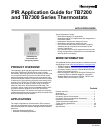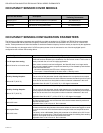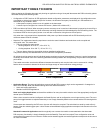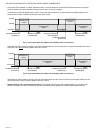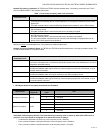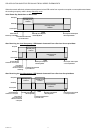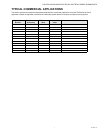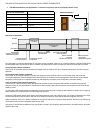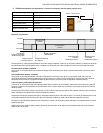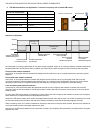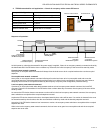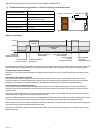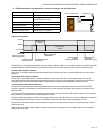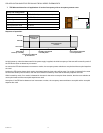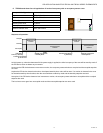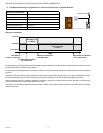
PIR APPLICATION GUIDE FOR TB7200 AND TB7300 SERIES THERMOSTATS
3 63-4526—01
IMPORTANT THINGS TO KNOW
When reviewing the following document and planning an application using a Honeywell thermostat with PIR functionality, please
remember the important following notes:
• Configuration of PIR Functions: All PIR application related configuration parameters are displayed in the configuration menu
or available as objects in the network object list. However, the advanced occupancy functionality of a PIR attached to a
thermostat is only enabled if either:
— A Honeywell occupancy sensor cover is installed on the thermostat
— A remote input is configured as a remote PIR sensor ( Motion NO or Motion NC )
• PIR Cover Warm-Up Period: When occupancy sensor accessory cover is used and a thermostat is powered up; there will be a
1 minute warm up period before any local movements can being detected and acknowledged by the PIR sensing device. The
local status LEDs for the occupancy sensor cover will also not be active during that one minute period.
Only when that 1 minute period has elapsed after initial power up of the thermostat will the PIR functionality and local
movement status LEDs be activated.
• Setpoints: The implemented stand-by setpoints are under the same limitations and restrictions as the occupied and
unoccupied ones. This means that:
— They use exactly the same range:
• Heating setpoints: 40 to 90 °F ( 4.5 to 32.0 °C )
• Cooling setpoints: 54 to 100 °F ( 12.0 to 37.5 °C )
— They are always limited by the applied minimum deadband configuration
They will be limited by the Heat Maximum and Cool Minimum configuration parameters
All individual cooling setpoints and all individual heating setpoints can be set independently. However, A typical arrangement
will always have the set value of the stand-by parameters residing between the corresponding occupied and unoccupied set-
point values.
The installer must make sure that the difference between the stand-by and occupied value can be recovered in a timely
fashion when movement is detected in the zone and large enough to warrant maximum energy savings.
• Application Range: The range of applications covered with the PIR occupancy logic can be segmented in 2 categories in
terms of functionality. Both use different settings and have different behaviors:
— Hotel and lodging applications
— Standard commercial applications
Hotel and Lodging Applications can benefit the addition of an entry door switch wired to one of the appropriately configured
remote input of a thermostat.
When a door contact is used and configured, the Stand-By timer and its configuration are no longer active or used. The occu-
pancy front toggle between occupied and stand-by is now simply dictated by both the door contact and the PIR sensing device
used.
If movements are detected by the PIR cover, the room will always be occupied. The switch back to stand-by mode will only
happen if the door switch toggles open / close. Please review attached lodging application examples in the document for more
information
Standard Commercial Applications would not typically use a remote door switch contact attached to the thermostat.
PIR occupancy functionality is simply dictated by both the Stand-By Timer and Unoccupied Timer configuration value and
movements being present or not in the area. Please review attached typical commercial application examples in the document
for more information
Occ Heat
= 72F
Occ Cool
= 75F
St-By Heat
= 69F
Unocc Heat
= 65F
St-By Cool
= 78F
Unocc Cool
= 82F
Room Temperature
Deadband



